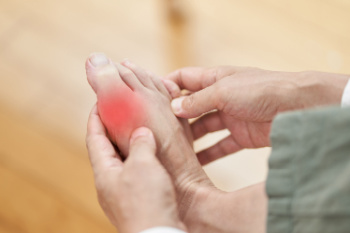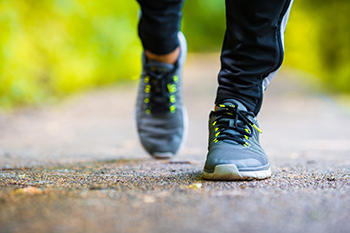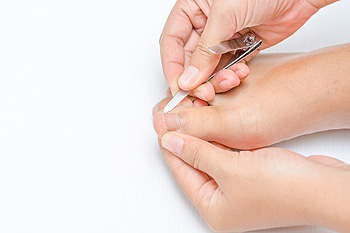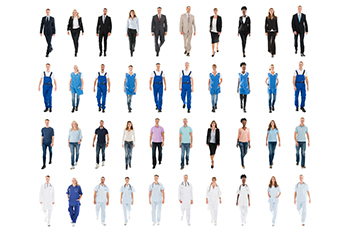February 2024
How Gout Progresses and Who Is at Risk

Gout, a type of arthritis characterized by sudden and severe pain attacks, can progress through four distinct stages, each posing unique challenges and implications for affected individuals. Initially, the asymptomatic hyperuricemia stage occurs, where elevated uric acid levels accumulate in the blood without any noticeable symptoms. This stage can persist for years before progressing to acute gouty arthritis, marked by sudden and intense joint pain, typically in the big toe. If left untreated, recurrent gout attacks may ensue, leading to the chronic gout stage characterized by frequent flare-ups and potential joint damage. In severe cases, tophaceous gout may develop, characterized by the formation of urate crystals in the joints and surrounding tissues, resulting in visible lumps. While anyone can develop gout, certain factors such as genetics, obesity, dietary habits rich in purines, alcohol consumption, and certain medications increase the risk. If you have developed gout, it is strongly suggested that you are under the care of a podiatrist who can determine which stage you are in, and offer effective relief options.
Gout is a foot condition that requires certain treatment and care. If you are seeking treatment, contact Gregory Rorick, DPM from Rorick Podiatry, PC. Our doctor will treat your foot and ankle needs.
What Is Gout?
Gout is a type of arthritis caused by a buildup of uric acid in the bloodstream. It often develops in the foot, especially the big toe area, although it can manifest in other parts of the body as well. Gout can make walking and standing very painful and is especially common in diabetics and the obese.
People typically get gout because of a poor diet. Genetic predisposition is also a factor. The children of parents who have had gout frequently have a chance of developing it themselves.
Gout can easily be identified by redness and inflammation of the big toe and the surrounding areas of the foot. Other symptoms include extreme fatigue, joint pain, and running high fevers. Sometimes corticosteroid drugs can be prescribed to treat gout, but the best way to combat this disease is to get more exercise and eat a better diet.
If you have any questions please feel free to contact our office located in New York Mills, Utica, NY . We offer the newest diagnostic and treatment technologies for all your foot and ankle needs.
Treatment Options for Drop Foot

Foot drop is a condition marked by having difficulty lifting or moving the foot and toes. The foot fails to lift properly, causing a gait that looks like marching. Foot drop typically stems from nerve injuries as the result of sports injuries, spinal issues like slipped discs, or neuropathies associated with conditions such as diabetes. Other causes of drop foot include inherited conditions like Charcot-Marie-Tooth disease or neurological disorders, such as stroke or multiple sclerosis. Treatment strategies for foot drop are multifaceted, depending on the underlying cause and severity of symptoms. Certain exercises can play an important role in strengthening and stretching muscles to improve function. In addition, braces, splints, or custom orthotics may offer external support and aid in maintaining proper foot positioning. In cases of permanent impairment, surgical joint fusion or nerve repair may be necessary. Electrical nerve stimulation devices also can offer promising therapeutic options, particularly for individuals affected by stroke or multiple sclerosis. If you have symptoms of foot drop, it is suggested that you schedule an appointment with a podiatrist for an exam and diagnosis, followed by the appropriate treatment options.
If you have any concerns about your feet, contact Gregory Rorick, DPM from Rorick Podiatry, PC. Our doctor can provide the care you need to keep you pain-free and on your feet.
Biomechanics in Podiatry
Podiatric biomechanics is a particular sector of specialty podiatry with licensed practitioners who are trained to diagnose and treat conditions affecting the foot, ankle and lower leg. Biomechanics deals with the forces that act against the body, causing an interference with the biological structures. It focuses on the movement of the ankle, the foot and the forces that interact with them.
A History of Biomechanics
- Biomechanics dates back to the BC era in Egypt where evidence of professional foot care has been recorded.
- In 1974, biomechanics gained a higher profile from the studies of Merton Root, who claimed that by changing or controlling the forces between the ankle and the foot, corrections or conditions could be implemented to gain strength and coordination in the area.
Modern technological improvements are based on past theories and therapeutic processes that provide a better understanding of podiatric concepts for biomechanics. Computers can provide accurate information about the forces and patterns of the feet and lower legs.
Understanding biomechanics of the feet can help improve and eliminate pain, stopping further stress to the foot.
If you have any questions please feel free to contact our office located in New York Mills, Utica, NY . We offer the newest diagnostic and treatment technologies for all your foot and ankle needs.
Trim Properly to Avoid Ingrown Toenails
 Improper toenail trimming is a common culprit behind ingrown toenails, a painful condition that occurs when the nail grows into the surrounding skin. The risk of ingrown toenails increases when toenails are trimmed improperly. This includes when toenails are cut too short, rounded at the corners, or not trimmed straight across. To trim toenails correctly and reduce the likelihood of ingrowth, you should follow a few simple steps. Firstly, soften the nails by soaking the feet in warm water for a few minutes. Using sanitized nail clippers, cut the nails straight across, avoiding curved edges. Ensure that the nails remain slightly longer than the skin at the nail's edge. Digging the clippers into the corners of the nails, or trying to create a rounded shape, will increase your chances of developing ingrown toenails. Adopting these toenail-trimming practices will help you maintain healthy, pain-free feet. If you suspect ingrowth, it is suggested you seek an appointment with a podiatrist, who can help you treat ingrown toenails and provide more prevention tips.
Improper toenail trimming is a common culprit behind ingrown toenails, a painful condition that occurs when the nail grows into the surrounding skin. The risk of ingrown toenails increases when toenails are trimmed improperly. This includes when toenails are cut too short, rounded at the corners, or not trimmed straight across. To trim toenails correctly and reduce the likelihood of ingrowth, you should follow a few simple steps. Firstly, soften the nails by soaking the feet in warm water for a few minutes. Using sanitized nail clippers, cut the nails straight across, avoiding curved edges. Ensure that the nails remain slightly longer than the skin at the nail's edge. Digging the clippers into the corners of the nails, or trying to create a rounded shape, will increase your chances of developing ingrown toenails. Adopting these toenail-trimming practices will help you maintain healthy, pain-free feet. If you suspect ingrowth, it is suggested you seek an appointment with a podiatrist, who can help you treat ingrown toenails and provide more prevention tips.
Ingrown toenails can become painful if they are not treated properly. For more information about ingrown toenails, contact Gregory Rorick, DPM of Rorick Podiatry, PC. Our doctor can provide the care you need to keep you pain-free and on your feet.
Ingrown Toenails
Ingrown toenails occur when a toenail grows sideways into the bed of the nail, causing pain, swelling, and possibly infection.
Causes
- Bacterial infections
- Improper nail cutting such as cutting it too short or not straight across
- Trauma to the toe, such as stubbing, which causes the nail to grow back irregularly
- Ill-fitting shoes that bunch the toes too close together
- Genetic predisposition
Prevention
Because ingrown toenails are not something found outside of shoe-wearing cultures, going barefoot as often as possible will decrease the likeliness of developing ingrown toenails. Wearing proper fitting shoes and using proper cutting techniques will also help decrease your risk of developing ingrown toenails.
Treatment
Ingrown toenails are a very treatable foot condition. In minor cases, soaking the affected area in salt or antibacterial soaps will not only help with the ingrown nail itself, but also help prevent any infections from occurring. In more severe cases, surgery is an option. In either case, speaking to your podiatrist about this condition will help you get a better understanding of specific treatment options that are right for you.
If you have any questions please feel free to contact our office located in New York Mills, Utica, NY . We offer the newest diagnostic and treatment technologies for all your foot and ankle needs.
Proper Footwear for a Productive Workday

In the hustle and bustle of our daily lives, the importance of wearing appropriate shoes often takes a backseat. However, the effect of choosing the right footwear for your workday cannot be overstated. The shoes you wear play a pivotal role in supporting your feet and maintaining overall well-being. Wearing ill-fitting or improper shoes can lead to a cascade of issues, from discomfort and fatigue to more severe problems like joint pain and posture issues. Investing in the right pair of shoes tailored to your work environment is an investment in your health and productivity. The correct shoes provide adequate support, preventing strain on your feet and lower limbs throughout the day. By prioritizing proper footwear, you not only enhance your physical comfort but also contribute to a more focused and effective work routine, setting the foundation for a successful and pain-free professional journey. If you experience any type of foot pain as a result of the shoes you wear while working, it is suggested that you consult a podiatrist who can offer treatment options.
While working on the feet, it is important to take the proper care of them. For more information about working on your feet, contact Gregory Rorick, DPM from Rorick Podiatry, PC. Our doctor will treat your foot and ankle needs.
Working on Your Feet
Standing on your feet for long periods of time can cause stress and pain in your feet. Your whole body may experience change in terms of posture, back pain, bunions, callouses and or plantar warts. There are ways to avoid these conditions with proper foot care, smart choices and correct posture.
Positive Changes
Negative heeled shoe – Choosing this shoe type places the heel slightly lower than the ball of the foot. These are great for overall foot health. Find shoes that fit you correctly.
Go barefoot – Our feet were not designed to be enclosed for all hours of the day. Try to periodically expose your feet to air.
Eliminate Pain
Foot Exercises – Performing simple exercises, incorporating yoga and doing stretches are beneficial. This will allow increased blood flow to the area and muscles of the foot.
Achilles tendon – Stretching the foot out flat on the floor will relax the calf muscles and tendon. These exercises can be performed almost anywhere. Make sure you add these exercises to your daily regimen.
With a little bit of this information and knowing more about foot health, you will notice changes. Foot stretches and proper footwear will help with pain and prevent further issues.
If you have any questions please feel free to contact our office located in New York Mills, Utica, NY . We offer the newest diagnostic and treatment technologies for all your foot and ankle needs.










